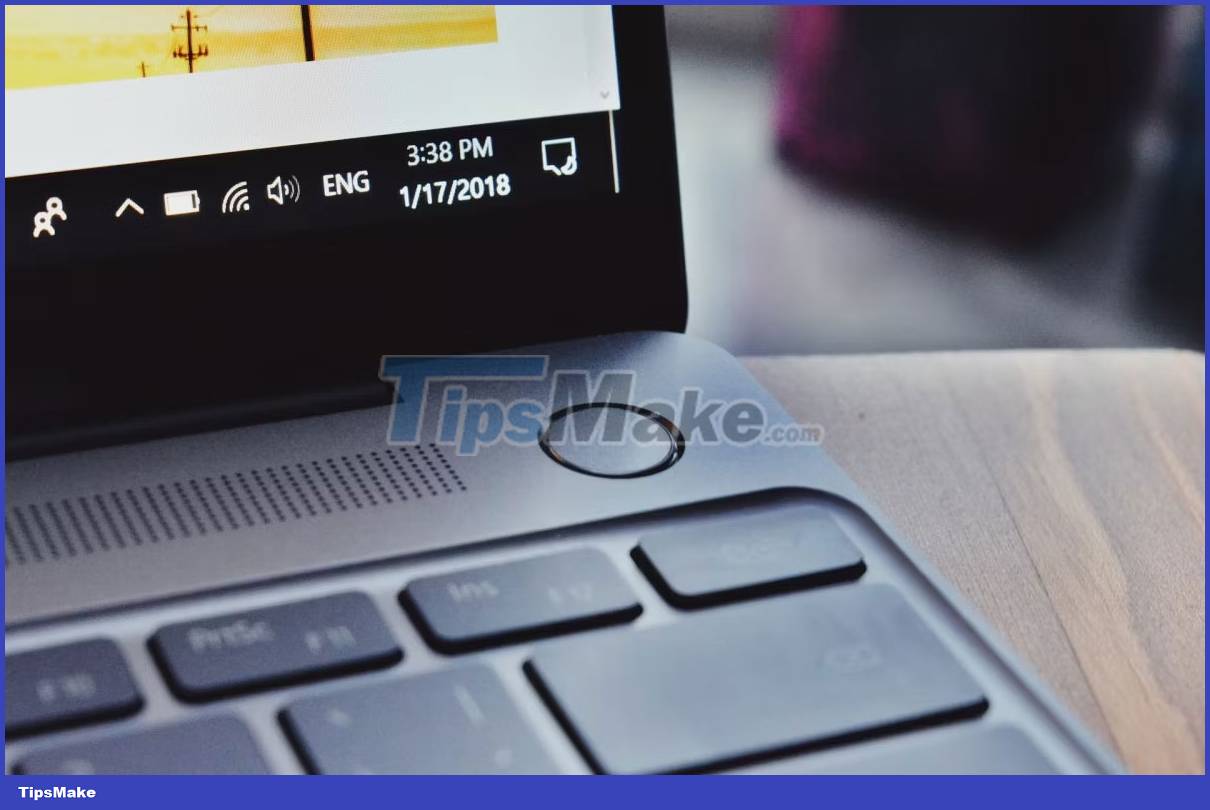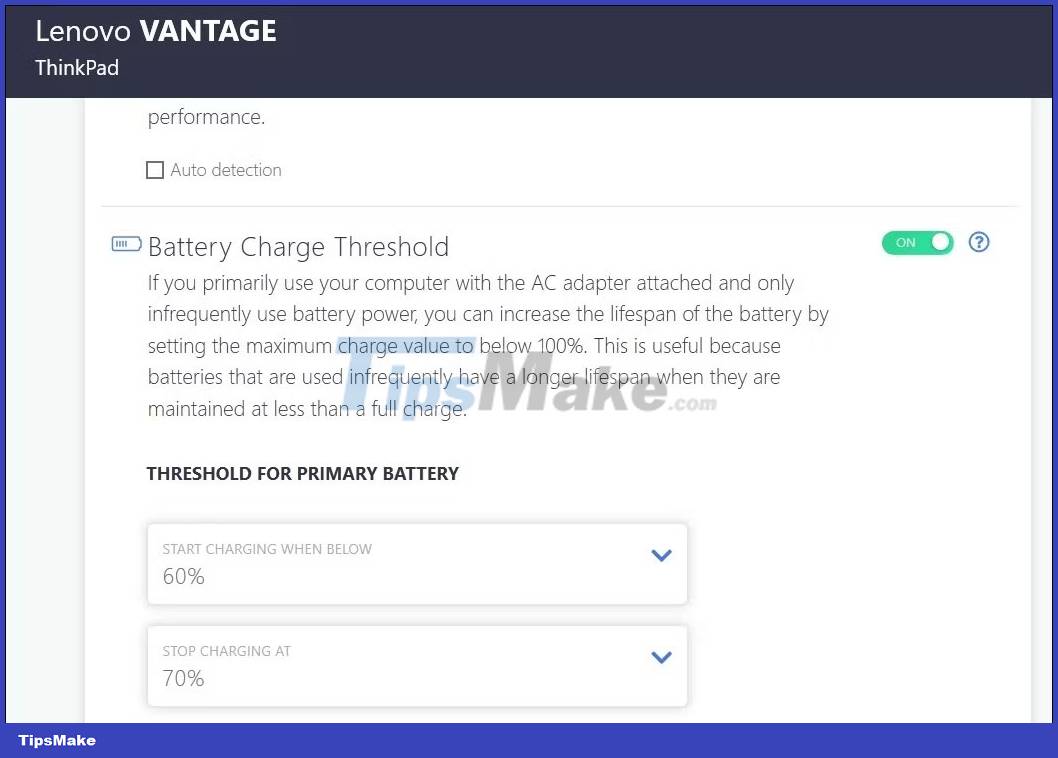7 ways to fix Windows laptop errors that do not charge via USB-C
Since there can be several reasons for such charging issues, there is no universal solution that works for everyone. Rest assured, following these tips will help your Windows laptop charge via USB-C quickly.
1. Make sure your laptop supports USB-C charging
A USB-C port on a laptop does not necessarily mean it can be charged via USB-C. Therefore, your first step is to make sure your Windows laptop supports USB-C charging. If unsure, consult your PC manual or visit the manufacturer's website to verify if your laptop supports USB-C charging.
If your laptop supports USB-C charging, connect the charger to a port that supports Power Delivery (PD). If you connect to a USB-C port that only supports data transfer, your laptop will not charge. Look for a small battery icon next to the USB-C port to identify which port is used for charging.
2. Use compatible charger and cable
Using the appropriate charger and charging cable is also important. It's best to use the charger and cable that came with the laptop. If you are using another charger or cable, you need to make sure it is powerful enough to charge your laptop.

Dirt particles in the charging port can also cause loose connections and hinder the charging process. So make sure the charging cable is securely connected. Also, check the cable for any cuts.
3. Remove the battery and try again
It's possible that the charging issue isn't related to your USB-C port or charger, but to the battery itself. To rule out this possibility, try plugging in your laptop without the battery.
For laptops with removable batteries, remove the battery by pulling the latches on the underside. Then, hold down the power button for 10 to 15 seconds to drain any remaining power from the system. Then, plug the laptop into an outlet and try turning it on without the battery.

If the laptop powers on, there should be no problem with the USB-C port or your charging accessory. Use a soft, dry cloth to clean the battery compartment and remove any foreign objects. Then, reinsert the battery into its compartment and check that all the contacts are aligned.
If your Windows laptop still won't charge, your laptop battery may be dead and needs to be replaced.
4. Clear battery charging threshold
Your Windows laptop can't charge to 100%? This may be because you have set a battery charge threshold, a feature on most modern laptops that allows you to extend battery life by preventing the battery from charging beyond a certain level, such as 80 %.
This setting may make it appear that your laptop is not charging. The battery's maximum RSOC (or Relative State of Charge) capacity may be set in the BIOS or a proprietary system companion application, depending on the laptop manufacturer.

Start by setting the battery charging threshold on your Windows laptop and follow the steps to remove the battery charging limit. Once you've done that, you can fully charge your laptop.
5. Reset power plan to default configuration
If removing the battery charge threshold doesn't resolve the issue, another power setting may be causing the problem. You can try resetting your power plan to the default configuration and see if that solves the problem.
To reset your power plan to default on Windows, follow these steps:
- Press Win + S to open the search menu.
- Type Command Prompt in the search box and select Run as administrator on the right.
- Select Yes when the User Account Control (UAC) prompt appears.
- Enter the following command into the console and press Enter .
powercfg -restoredefaultschemes 
When you run the above command, Windows will reset all power plans to default settings. Then check to see if you can charge your laptop.
6. Update or reinstall the battery driver
Battery drivers on laptops facilitate communication between Windows and your laptop battery. If these drivers are outdated or corrupted, you may see a yellow triangle on the battery icon and your laptop will not charge via USB-C. In most cases, such problems can be resolved by updating the driver. To do so, use these steps:
- Press Win + X to open the Power User menu.
- Select Device Manager from the list.
- Expand Batteries , right-click on the first item and select Update driver .
- Select Search automatically for drivers .
- Click the Search for updated drivers on Windows Update option , then follow the on-screen prompts to complete the process.

Similarly, update the Microsoft ACPI-Compliant Control Method Battery driver .
If you cannot charge your laptop even after updating the battery drivers, they may be damaged. In this case, you can try to fix broken drivers on Windows by reinstalling them.
7. Update BIOS/UEFI
Another reason why your Windows laptop cannot charge via USB-C is incorrect or outdated BIOS settings. BIOS is a small program stored on your computer's motherboard, responsible for initializing computer hardware and loading the operating system. If the BIOS settings are incorrect, it can cause problems with the USB-C port on your computer.
So, if nothing else works, you can try updating the BIOS settings on your Windows laptop.
You should read it
- Tips to overcome laptop battery charging error
- Fix 'plugged in, not charging' laptop battery error
- Overnight charging laptop exploded a corner of the office
- How to fix laptop battery charging error is very simple that you should know
- Quick fix laptop error Windows 10 does not charge the battery
- How to check the number of battery charge cycles on Windows laptop
 How to completely remove Norton or McAfee from Windows
How to completely remove Norton or McAfee from Windows How to fix Windows Update error 0x80073701
How to fix Windows Update error 0x80073701 How to create a shortcut to clean the Recycle Bin on Windows 10/11
How to create a shortcut to clean the Recycle Bin on Windows 10/11 7 new features of Moment 4 update added to Windows 11
7 new features of Moment 4 update added to Windows 11 How to fix UnityPlayer.dll error (0xc0000005) in Windows 10/11
How to fix UnityPlayer.dll error (0xc0000005) in Windows 10/11 How to use Paint Cocreator to create AI images in Windows 11
How to use Paint Cocreator to create AI images in Windows 11